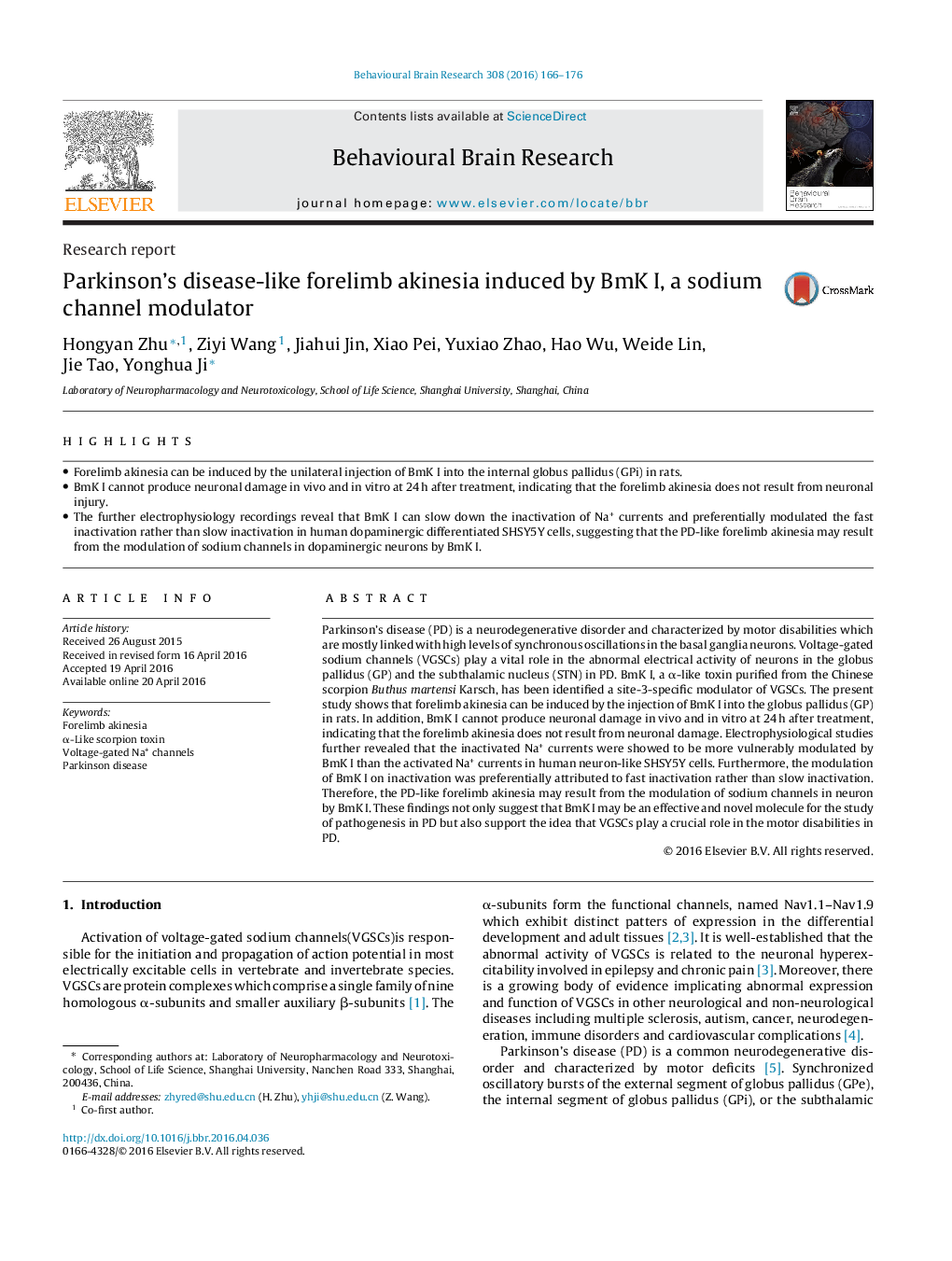| کد مقاله | کد نشریه | سال انتشار | مقاله انگلیسی | نسخه تمام متن |
|---|---|---|---|---|
| 6256033 | 1612925 | 2016 | 11 صفحه PDF | دانلود رایگان |

- Forelimb akinesia can be induced by the unilateral injection of BmK I into the internal globus pallidus (GPi) in rats.
- BmK I cannot produce neuronal damage in vivo and in vitro at 24Â h after treatment, indicating that the forelimb akinesia does not result from neuronal injury.
- The further electrophysiology recordings reveal that BmK I can slow down the inactivation of Na+ currents and preferentially modulated the fast inactivation rather than slow inactivation in human dopaminergic differentiated SHSY5Y cells, suggesting that the PD-like forelimb akinesia may result from the modulation of sodium channels in dopaminergic neurons by BmK I.
Parkinson's disease (PD) is a neurodegenerative disorder and characterized by motor disabilities which are mostly linked with high levels of synchronous oscillations in the basal ganglia neurons. Voltage-gated sodium channels (VGSCs) play a vital role in the abnormal electrical activity of neurons in the globus pallidus (GP) and the subthalamic nucleus (STN) in PD. BmK I, a α-like toxin purified from the Chinese scorpion Buthus martensi Karsch, has been identified a site-3-specific modulator of VGSCs. The present study shows that forelimb akinesia can be induced by the injection of BmK I into the globus pallidus (GP) in rats. In addition, BmK I cannot produce neuronal damage in vivo and in vitro at 24 h after treatment, indicating that the forelimb akinesia does not result from neuronal damage. Electrophysiological studies further revealed that the inactivated Na+ currents were showed to be more vulnerably modulated by BmK I than the activated Na+ currents in human neuron-like SHSY5Y cells. Furthermore, the modulation of BmK I on inactivation was preferentially attributed to fast inactivation rather than slow inactivation. Therefore, the PD-like forelimb akinesia may result from the modulation of sodium channels in neuron by BmK I. These findings not only suggest that BmK I may be an effective and novel molecule for the study of pathogenesis in PD but also support the idea that VGSCs play a crucial role in the motor disabilities in PD.
Journal: Behavioural Brain Research - Volume 308, 15 July 2016, Pages 166-176